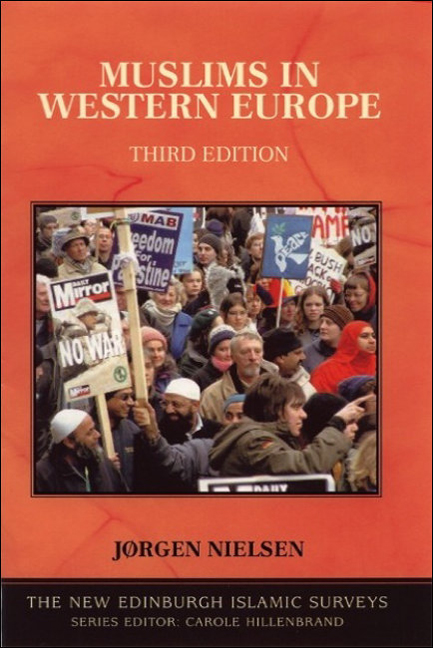5 - The Netherlands and Belgium
Published online by Cambridge University Press: 20 December 2017
Summary
THE NETHERLANDS
Immigration
Immigration involving Muslims started in the Netherlands after 1945. The first small groups arrived as Indonesia became independent in 1949. Among the mainly Christian Moluccan soldiers of the Netherlands East Indies Army were about 1,000 Muslims. By the early 1980s, this group was estimated to number about 1,500. As the Moluccans had not been expected to stay for long when they arrived, they ended up in temporary camp accommodation and were only slowly moved to more permanent housing after some years.
A more substantial number of Muslims came from the Dutch colony of Suriname (Dutch Guyana): some of them were part of the Lahore Ahmadiyya movement. From the mid-1960s, labour migration from that colony started to increase, reaching 5,500 people entering in 1970. Talk of more restrictive immigration laws led to a doubling of the rate of immigration by 1974. An explosive rise to 36,000 entries in 1975 could be attributed to the coming of independence, after which Surinamese not living in the Netherlands would lose Dutch citizenship. After independence, immigration continued under a bilateral agreement, mainly for family reunification, until the agreement expired in 1980. The majority of the Surinamese were Christian, but an important number were of Indian origin and continue to call themselves Hindustanis. By the early 1980s, it was estimated that about 30,000 of the Surinamese living in the Netherlands were Muslim and a further 90,000 were Hindu.
Apart from these special cases, there was little immigration until the 1960s. For a long time, the country considered itself overpopulated, but by this time the available internal labour pool was exhausted, and industry started looking for workers from around the Mediterranean. After first making bilateral recruitment agreements with Italy, Spain and Portugal, the turn came to Turkey in 1964. Agreements followed with Morocco in 1969 and with Tunisia and Yugoslavia in 1970. By this time, there were 92,000 foreign workers in the country, the largest single group being the Turks. Despite a short recession in 1967, immigration continued to increase sharply until it was stopped in 1974.
- Type
- Chapter
- Information
- Muslims in Western Europe , pp. 67 - 83Publisher: Edinburgh University PressPrint publication year: 2015



